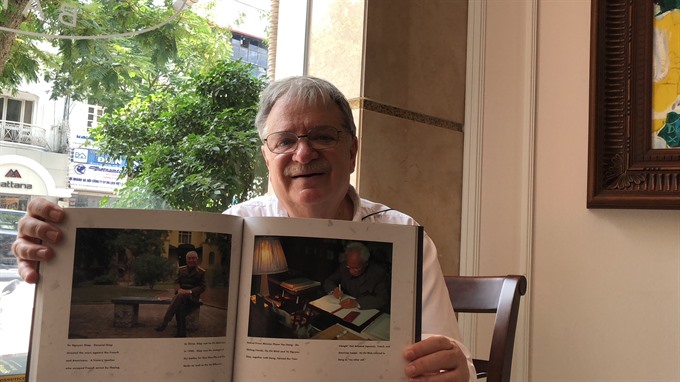 Life & Style
Life & Style

The Vietnamese Nom Preservation Foundation on May 31 presented the annual Balaban Award to Bùi Xuân Đức, director of HCM City’s General Science Library.
 |
| Bùi Xuân Đức (right), director of HCM City’s General Science Library, receives the Balaban award from a representative of the Vietnamese Nôm Preservation Foundation in HCM City on May 31. — Photo from facebook of VNPF |
HÀ NỘI — The Vietnamese Nôm Preservation Foundation on May 31 presented the annual Balaban Award to Bùi Xuân Đức, director of HCM City’s General Science Library.
He received the award for his contributions to preserving the ancient writing system.
Under Đức’s direction, the library runs a reading corner for Sino-Nôm scholars, who are mostly foreigners. It hosts 2,000 valuable printed material. Many of the foreign readers here are researchers from all over the world who cannot find such material in their home countries.
The Balaban Award is named after John Balaban, a poet and professor of English in the creative writing programme in North California, the United States. Balaban has done some serious research on the writing system.
Since 2009, nine Vietnamese scholars and Shimizu Masaaki from Japan have received the award.
The Vietnamese Nôm Preservation Foundation was established in the late 1980s to standardise the Chữ Nôm script for use in computers and on the internet.
The foundation’s initiators feared that an entire literary culture, 1,000 years of writing in Chữ Nôm---the Chinese-like script that the Vietnamese used to record their language---and its vast heritage of poetry, history, medicine and religion, was about to go extinct.
Chữ Nôm, is the ancient ideographic vernacular script of the Vietnamese language.
After Việt Nam attained independence from China in 939 AD, Chữ Nôm became the national script.
For the next 1,000 years—from the 10th century to the 20th century—much of Vietnamese literature, philosophy, history, law, medicine, religion and government policy was written in the Nôm script.
Approximately 1,000 years of Vietnamese cultural history is recorded in this unique system, but the heritage is now nearly lost.
With the advent of Quốc Ngữ---modern Romanised script--- in the 17th century, the Nôm script gradually died out, with the French colonial government ordering against its use.
Today, less than 100 scholars worldwide can read the Nôm script. — VNS
 |
| Prof John Balaban introduces a photo book on Việt Nam that he wrote the captions in his recent trip to Hà Nội. — VNS Photo Lê Hương |








